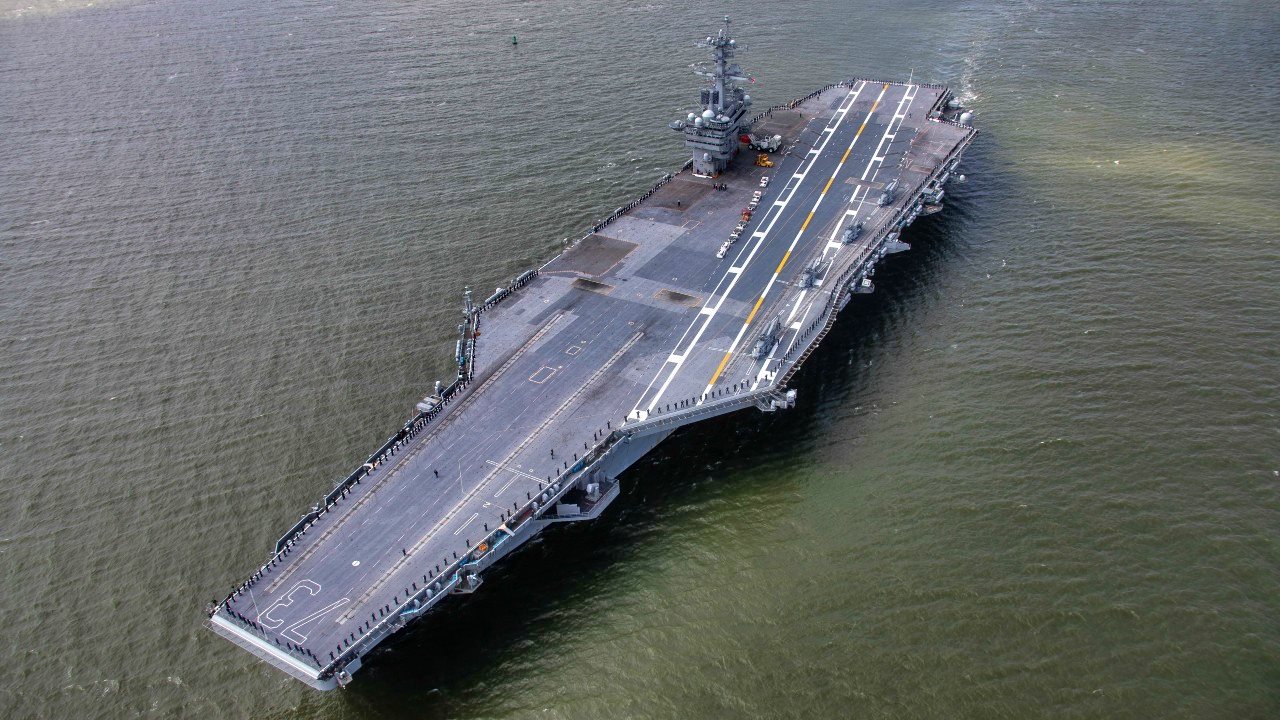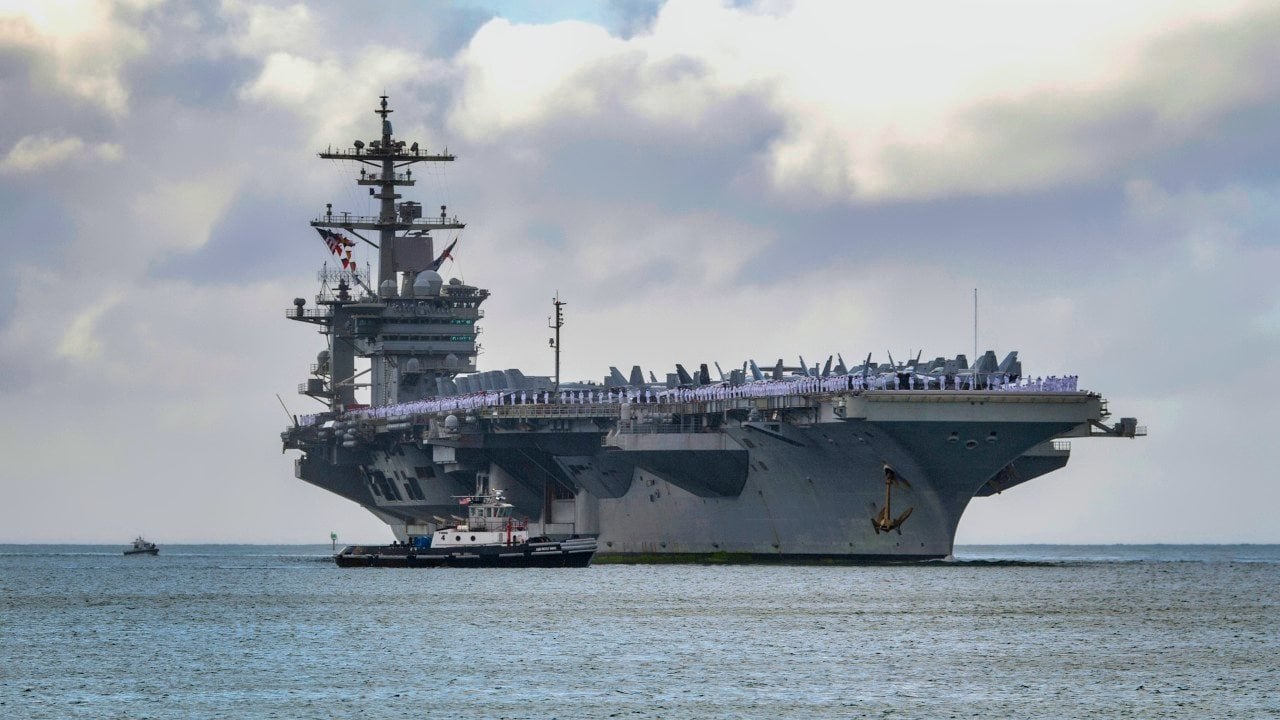China's DF-26B Missile Could Sink U.S. Navy Aircraft Carriers
The DF-26B allows China to target US Navy warships operating near regions China considers to be within its sphere of influence. This capability means that all those expensive US Navy warships—notably aircraft carriers—will be vulnerable to attack from the DF-26B. The DF-26B carries the nickname “carrier killer.”
Summary and Key Points: The People’s Republic of China (PRC) has developed a strategic approach to counter the United States’ military power in the Pacific, focusing on its advanced missile arsenal, particularly the DF-26B, dubbed the "carrier killer."

-This intermediate-range ballistic missile allows China to target U.S. Navy warships and critical military bases such as Guam.
-By leveraging these missiles, China aims to keep U.S. forces at bay during any conflict over Taiwan, thus enhancing its chances of successfully annexing the island. The U.S. must urgently reassess its defense strategies in the Indo-Pacific to counter this growing threat.
China’s DF-26B: The ‘Carrier Killer’ Threatening U.S. Naval Dominance
The People’s Republic of China (PRC) has been led by a cadre of strategists who believe that it is their right and a paramount national security concern to annex neighboring Taiwan as well as to push their military’s influence deeper into the Pacific Ocean.
The biggest hurdle to such an ambitious goal has been the United States Armed Forces. Specifically, given the geography of the region, the US Navy’s power projection has always been a complicating factor for Chinese strategists.
After many years of thinking about this problem, finally, China’s military may have worked out a solution that should trouble every US war planner.
China’s Overwhelming Missile Arsenal
Realizing that they cannot defeat the United States in a conventional war—especially on the open seas—Beijing has resolved to avoid such a scenario at all costs.
Beijing figured out long ago that any conflict with the West over Taiwan, for example, would be waged closer to China’s shores than America’s. And since most of China’s possible targets, notably Taiwan, are all reliant upon the US military for their defense, China’s forces would enjoy the equivalent of home-field advantage.
The DF-26B: China's Game-Changing Missile Arsenal Explained
The Dong Feng (DF)-26B is an intermediate-range ballistic missile that is a variant of the DF-26. This is an antiship ballistic missile version of the DF-26, which is specifically designed to reach targets as far afield as the US-controlled island of Guam. Since 2009, Guam has become the epicenter of US military activity stationed in what is now known as the Indo-Pacific. That island, which is about 4,000 kilometers from China’s shores, is home to a wide range of American military systems and personnel. The airfields of Guam, for instance, will play a critical role in any US military engagement with China—which many experts believe is coming soon.
The DF-26 would allow for Chinese forces to target those fixed positions and remove Guam as a base for the Americans in the event war between China and the United States over Taiwan erupts.
From a “Carrier Killer” to a “Ship Killer”
The DF-26B allows China to target US Navy warships operating near regions China considers to be within its sphere of influence. This capability means that all those expensive US Navy warships—notably aircraft carriers—will be vulnerable to attack from the DF-26B. The DF-26B carries the nickname “carrier killer.”
A 2022 United States Department of Defense analysis of China’s missile capabilities indicates “significant increases across the board” in terms of China’s missile arsenal. China increased the number of intermediate-range ballistic missiles, like the DF-26B from 300 in 2021, to 500 just a year later. By now, they must have over a thousand of these systems. That’s more than enough to stymie any US Navy attempt to bring its forces closer to Chinese shores, during the outbreak of war.

And that’s the point. China doesn’t need to fight the US Navy directly. Beijing’s forces just needs to keep the bulk of American military power back long enough for their forces to achieve their objectives. It’s all about playing keep-away. In so doing, without a consistent, reliable US military intervention directed against a Chinese invasion of Taiwan, China’s forces will have the opportunity to run roughshod over the region.
A 2022 assessment from Business Insider outlines how, “There are about 250 [DF-26] launchers that are able to be reloaded, as there are an estimated two missiles for every launcher, meaning China could quickly overwhelm an adversary’s defenses with a barrage of DF-26s, which China says is capable against large and medium-sized ships.” In fact, there are so many DF-26 launches scattered throughout China’s defensive perimeter that these weapons are more than just carrier killers. They’re general “ship killers,” too, according to Tom Shugart of the Center for a New American Security think tank in Washington, D.C.
Bottom line: once China decides to go into Taiwan and take the island for itself, the US military will find itself unable to effectively project power in defense of Taiwan. The longer that the US military is unable to reliably deploy its forces in defense of Taiwan; the less that China fears or respects the United States, the more likely the chance is that the PRC will defeat America. Washington must do a serious rethinking of its force posture in the Indo-Pacific and what it is willing to sacrifice in defense of Taiwan.

And time is running out for this discussion to be had.
Author Experience and Expertise: Brandon J. Weichert
Brandon J. Weichert, a National Interest national security analyst, is a former Congressional staffer and geopolitical analyst who is a contributor at The Washington Times, the Asia Times, and The-Pipeline. He is the author of Winning Space: How America Remains a Superpower, Biohacked: China’s Race to Control Life, and The Shadow War: Iran’s Quest for Supremacy. His next book, A Disaster of Our Own Making: How the West Lost Ukraine, is due October 22 from Encounter Books. Weichert can be followed via Twitter @WeTheBrandon.
All images are Creative Commons or Shutterstock.
From the Vault
Russia Freaked Out: Why the U.S. Navy 'Unretired' the Iowa-Class Battleships
Battleship vs. Battlecruiser: Iowa-Class vs. Russia's Kirov-Class (Who Wins?)


